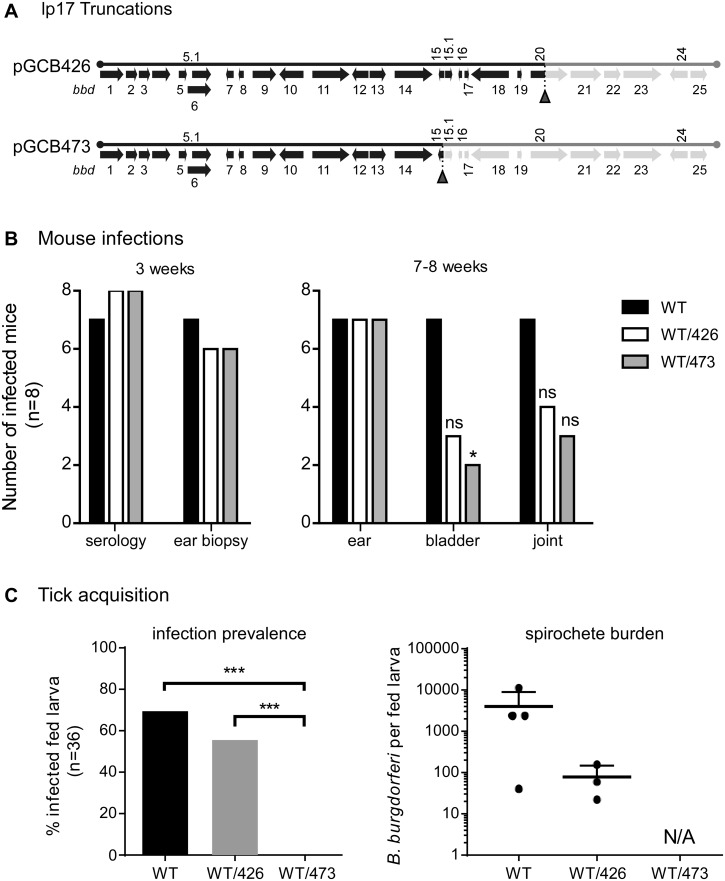FIG 4 .
Mouse infection and tick acquisition of B. burgdorferi harboring lp17 truncations. (A) Schematic diagram of pGCB426 and pGCB473, truncated forms of lp17 (37) that were introduced to displace full-length lp17 from wild-type S9. Pale-green shading indicates sequences that are deleted to the right of the synthetic telomere insertion points (red arrowheads beneath the diagram) in the respective lp17 truncations. This diagram is closely modeled after a figure by Sarkar et al. (30). (B) B. burgdorferi harboring lp17 truncations are infectious in mice. Three groups of 8 mice were injected with S9 (WT), S9/pGCB426 (WT/426), or S9/pGCB473 (WT/473). The ability of these B. burgdorferi strains to establish infection and persist in mice was assessed by seroconversion and isolation of spirochetes from ear biopsy specimens at 3 weeks postinfection and by isolation of spirochetes from ear, bladder, and joint tissues at 7 to 8 weeks postinfection, as indicated. *, P value of <0.05 compared to the WT using Fisher’s exact test; ns, no significant difference compared to the WT. (C) Acquisition of B. burgdorferi harboring lp17 truncations by larval ticks fed on infected mice. Three mice per strain that were positive for infection by both seroconversion and ear biopsy were used for larval tick feeding. The presence of spirochetes in fed larval ticks (left) was determined by culturing 36 individual ticks per strain in BSK medium. A subset of these fed larvae was also analyzed for spirochete burden, as determined by CFU in solid medium (right); each point denotes the number of viable spirochetes per tick. ***, P value of <0.0001 using Fisher’s exact test. There was no significant difference in prevalence of infection or spirochete burden between ticks infected with WT and those infected with WT/426. NA, not applicable since 0% of larvae acquired spirochetes from mice infected with WT/473.

